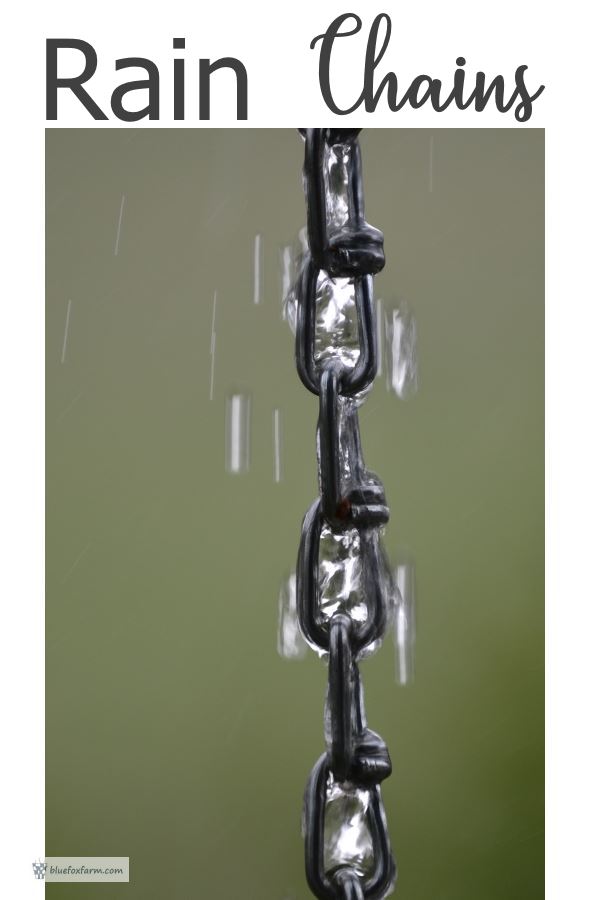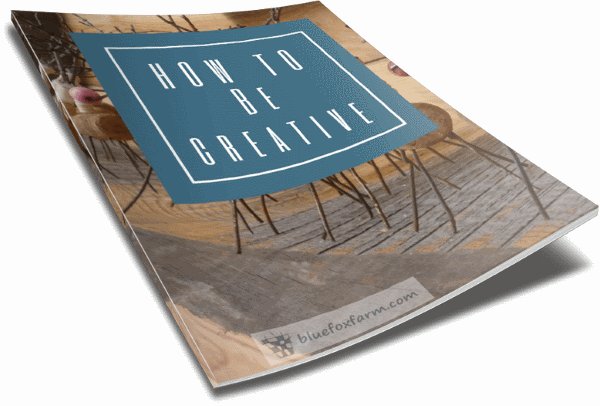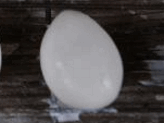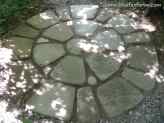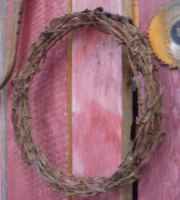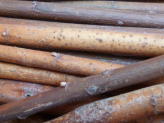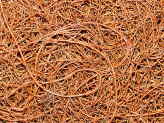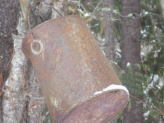Rain Chains
Utilizing Old Technology for Increased Charm and Beauty
Apart from being gorgeous, rain chains have been used for centuries in Japan and other Asian countries for guiding rain water down to the ground and preventing it from splashing.
By installing rain chains, downspouts are not necessary to funnel the water to a swale or cistern.
Another advantage in using rain chains instead of downspouts is that even in windy and typhoon prone areas, the chain will revert back to its position, unlike a downspout which could just be blown away by strong winds.
The heavier the rain chain, the less likely it is to be swung around by anything less than a hurricane.
Rain chains work by using some simple rules of physics – contact with the chain enables the molecules of water to break their water tension, making them cling to each other and minimize splashing.
I like the look of rain chains to direct runoff from the roof rather than downspouts.
I’ve been making rain chains out of rustic salvage to put on my sheds and buildings and the impact is immediate, giving some charm to an otherwise mundane yet essential feature of your dwelling.
Rain chains made from old thrift store finds such as outdated lighting fixtures attached to rain gutter chains with copper wire, or unique and different metal links are all that’s required.
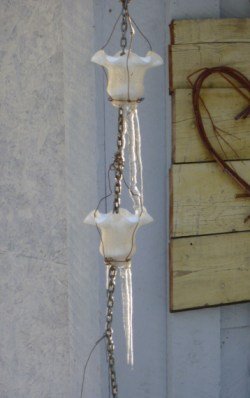 Glass Rain Chain made from old light fixtures
Glass Rain Chain made from old light fixturesYou may have to adjust your system a bit once you see how it works. Different sized links on your rain chain may give different effects.
Larger links are fine for smaller sized roofs, but they are ideal for a larger surface as this means faster run off.
Depending on the height of the roof (pitch) and the length of the area that will be filling the gutter, two or even three rain chains may be needed on the same gutter.
I install the top of the chain to the gutter with wire, placing it at the very end so that water won’t overshoot it and spray out.
Even with extreme rain storms, the water should simply slide down the chain.
The lower end of the rain chain can be in a rain barrel, or a French drain in the ground where the water can seep away. Swales or shallow ditches can direct excess water away from foundations of buildings.
There are many types of decorative rain chains available, including some made of solid copper, or like these ones, out of salvaged junk. Your diy rain chain will be unique and unusual, no matter what you use to create it.
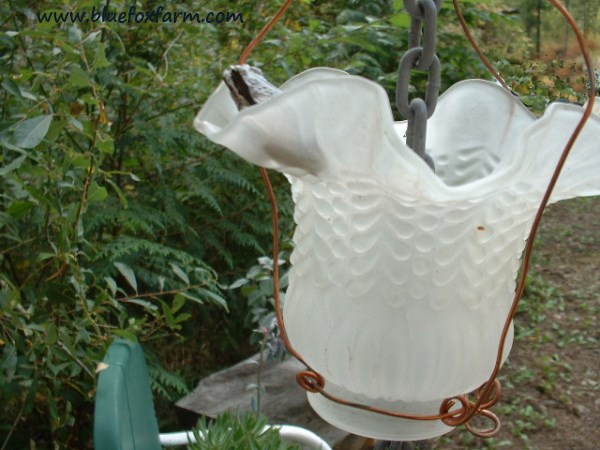 Pacific Tree Frogs make their homes in all kinds of garden junk, including the glass rain chains...
Pacific Tree Frogs make their homes in all kinds of garden junk, including the glass rain chains...Originally, I worried that the glass light fixtures wouldn't be able to withstand the snow and ice; it was needless - they make it through just fine, because no water pools in them to freeze and break them.
This glass rain chain drips into the rain barrel which has a hand pump on to fill watering cans. The rain barrel gets emptied before winter freeze up.
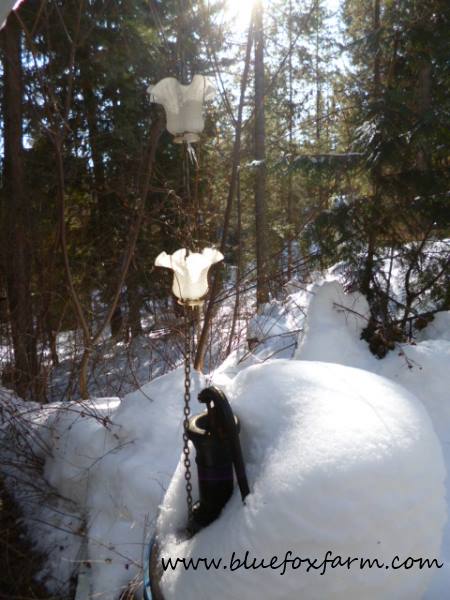 The glass rain chains remain in place during the winter months, even though the rain barrel is emptied.
The glass rain chains remain in place during the winter months, even though the rain barrel is emptied.If you look online but the ones there are out of your price range, making rain chains yourself using found and salvaged items will help the garden craft budget, and I guarantee no-one will have anything like it.
What is a rain chain?
What is a rain chain?
A rain chain forms the same solution as a downspout on a gutter. They create a way for water to get from the gutter to the ground, in an elegant and intriguing manner.
How does a rain chain work?
How does a rain chain work?
The surface of the rain chain acts like a magnet for the water, and it is attracted to it molecularly, and uses it to slide down to the ground. In heavy rain, the water will stick to the chain instead of dripping to the ground, or be blown by the wind.
How do I hang a rain chain?
How do I hang a rain chain?
Drill a hole in the very end of the gutter after removing the downspout if it has one, about half an inch (2 cm) from the end, and insert a hook through it. Hang the rain chain from the hook.
Learn what it takes to be creative - we all have the gene but how do we develop it? Get the free guide!
Fill in the form below for your copy;
(Don't be disappointed - use an email address that will accept the free download - some .aol email addresses won't.
If you don't see your download within a few minutes, try again with another email address - sorry for the bother.)
